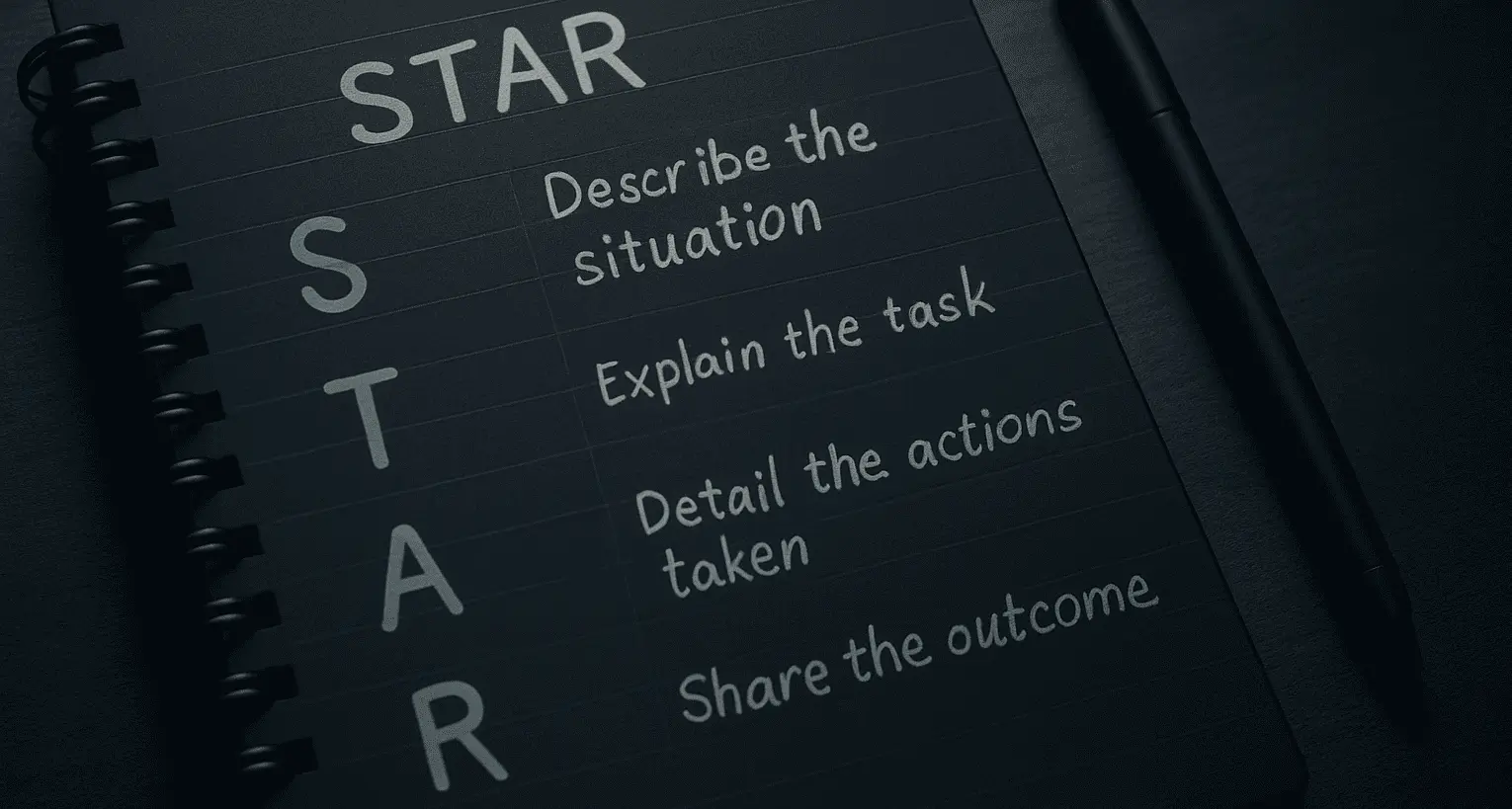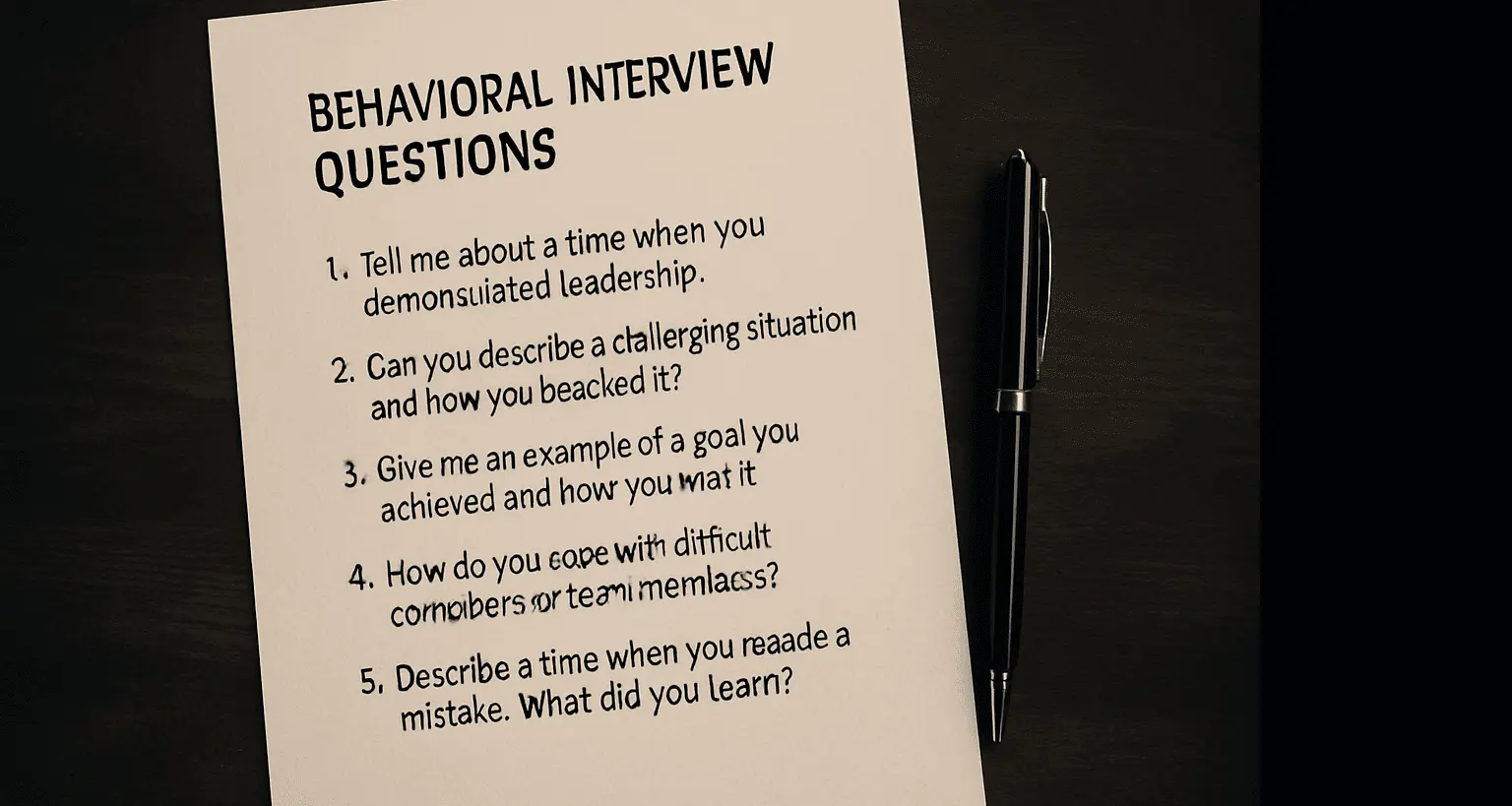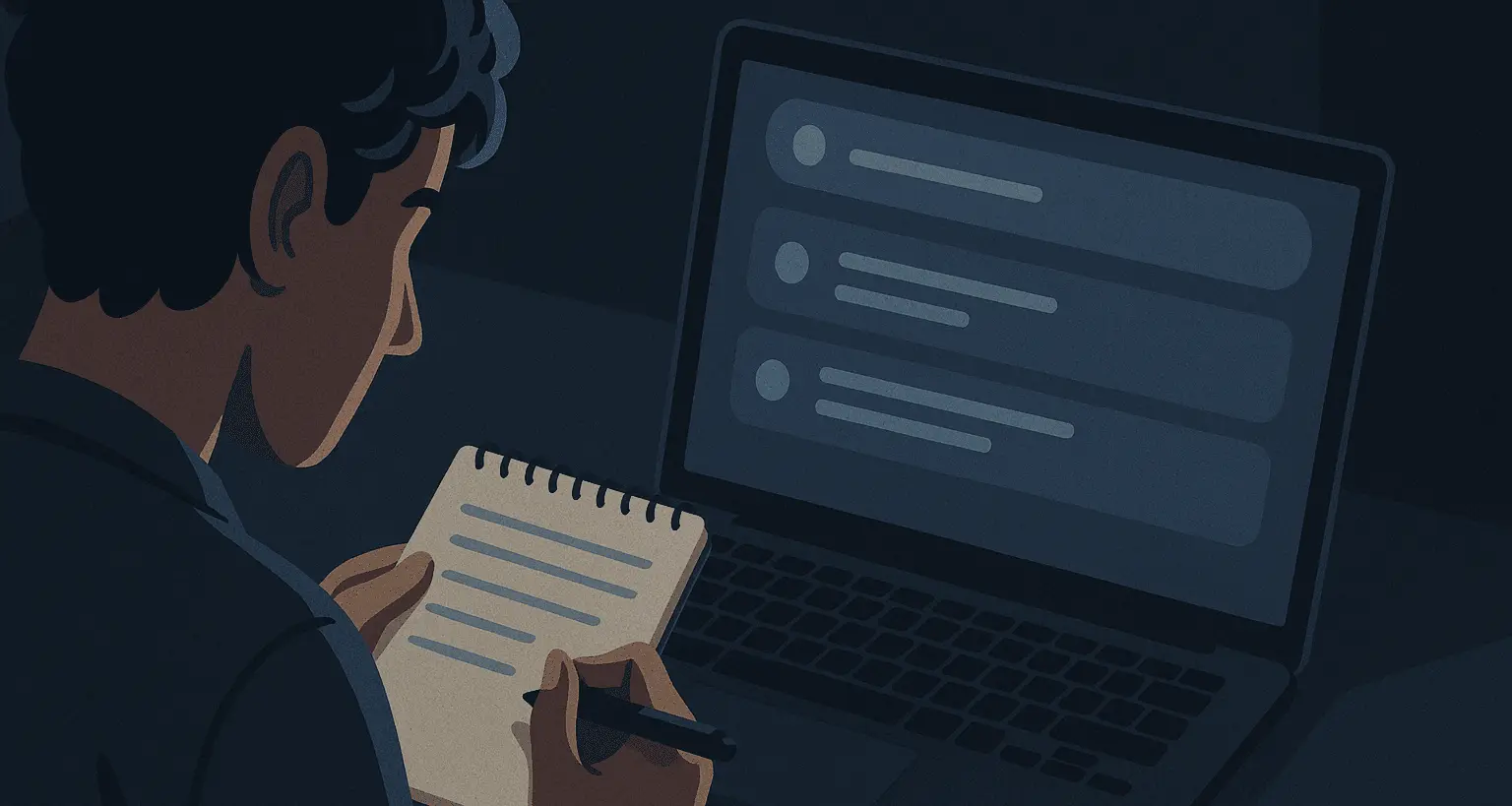STAR Interview Method: Structure Your Answers Like a Pro

The STAR interview method isn't some corporate riddle or a stiff formula that turns your personality into cardboard. It's a clean, flexible storytelling structure that lets you deliver sharp, memorable answers without rambling your way into a verbal maze. Whether you're interviewing for tech, finance, design, operations, or your first internship, STAR transforms your experience from "uhm… let me think" into clear, confident narratives that hiring managers can quickly trust.
Employers rely heavily on behavioral questions because they reveal how you actually think and act when things get messy. And the STAR interview method is your map for navigating those moments gracefully. Instead of hoping the right words magically appear, you break your answer into four reliable beats: Situation, Task, Action, and Result. This guide shows you how to use STAR without sounding robotic or scripted, plus real examples and advanced techniques to help you stand out in competitive roles.
What Is the STAR Interview Method?
At its core, the STAR interview method is a communication technique designed to help you answer behavioral questions clearly. It keeps your story grounded, structured, and relevant, so interviewers don't have to decode a messy timeline. You're essentially giving them a highlight reel instead of a three-season Netflix recap.
- Situation: Set the scene. What was the context?
- Task: What was your responsibility or the challenge?
- Action: What did you personally do?
- Result: What happened because of your actions?
STAR works because it mirrors logical thinking. Recruiters can follow your reasoning step by step, understand your impact, and assess whether your approach fits their team. More importantly, STAR helps you avoid the common trap of spending too much time on background and not enough on what actually matters: your contribution.
Why the STAR Interview Method Actually Works
Some candidates hear "framework" and instantly assume they're about to sound like an HR manual. But the STAR interview method works because it blends structure with personality. It lets you be human while staying coherent. When you use STAR well:
- Your answers stay under 2 minutes without feeling rushed.
- Interviewers can easily take notes and track your logic.
- You highlight impact instead of drowning them in backstory.
- You avoid vague answers like "I communicated better" or "I worked harder."
- You sound intentional instead of lucky.
Hiring teams want to see patterns: how you handle pressure, how you lead, how you fix things, how you collaborate, and how you bounce back from mistakes. STAR gives you the stage to show exactly that—without rambling or underselling yourself.
Breaking Down STAR: How to Use Each Part
1. Situation
Keep this short. One or two sentences, tops. You're not auditioning for a historical drama. Your job is to give just enough context so the challenge makes sense. Mention when, where, and what was at stake—but resist the urge to narrate every tiny detail. If your Situation section is longer than your Action section, you're doing it wrong.
2. Task
This is the turning point of your story. Describe your responsibility, your role, or the expectation placed on you. Not the team. Not the company. You. Interviewers want clarity about what part of the challenge belonged to you, not a vague group effort with blurred ownership.
3. Action
The most important pillar of the STAR interview method. This is where you shine. Explain exactly what you did, why you chose that approach, and how you solved problems along the way. Focus on verbs: built, analyzed, redesigned, negotiated, optimized, led, proposed, validated, and so on. If the interviewer can't tell what your personal contribution was, you're losing points.
4. Result
Quantify it whenever possible. Numbers make your achievements real: "Reduced processing time by 18%," "Increased retention by 25%," "Resolved 42 backlog tickets," "Cut error rate in half." Even human-centered outcomes ("rebuilt trust with a difficult client") are powerful when you describe the impact clearly. Always end with what changed and why it matters.
Example: STAR Interview Method in Action
Here's a high-quality example that avoids generic fluff:
Question: "Tell me about a time you fixed a broken process."
Situation: Our support team was drowning in a growing backlog of customer tickets, and our average response time jumped from two hours to almost nine. Morale was dropping fast.
Task: As the operations lead, I had to figure out the root cause and implement a sustainable fix without overworking the team.
Action: I analyzed three months of ticket data, identified repeat issues, and built an internal FAQ that cut unnecessary escalations. Then I introduced a triage rotation so more experienced agents handled complex cases first.
Result: Our backlog dropped by 62% in six weeks, and our average response time went down to 90 minutes. The team also reported feeling significantly less overwhelmed.
Notice how the example is tight, specific, and easy to follow. That's the power of the STAR interview method when done well.
Advanced STAR Tips to Stand Out
- Add reflection: End with what you learned and how you've applied it since.
- Use vivid verbs: Replace weak phrases like "helped with" or "was involved in."
- Keep the Result punchy: One sentence is usually enough.
- Match your story to the job: Don't share a finance example for a product design role.
- Build a library: Prepare six flexible STAR stories you can adapt on the fly.
The combination of clarity and authenticity is what wins interviews—not memorized scripts. When you use the STAR interview method effortlessly, you sound like someone who understands their own work, not someone repeating lines from a cheat sheet.
Common Behavioral Questions Perfect for STAR
- Tell me about a time you worked through conflict.
- Describe a situation where you had to take initiative.
- Tell me about a failure and what you learned.
- Describe a moment you simplified a complex problem.
- Tell me about a time you influenced someone without authority.
- Describe your most meaningful project and why.
- Tell me about a time you delivered under tight deadlines.
- Describe a risky decision you made and how it turned out.
- Tell me about a process you improved.
- Describe a challenging stakeholder interaction.
Any of these can be answered beautifully with the STAR interview method as long as your story is specific, honest, and relevant to the role you want.
Practice the STAR Interview Method the Smart Way
Don't just rehearse in your head. Speak your answers out loud. Time them. Record them. Or take the shortcut and use a mock interview platform like GetMockInterview.com to simulate real interviewer reactions. Within a few sessions, you'll start noticing smoother delivery, tighter answers, and clearer articulation of your impact.
Once you get comfortable with STAR, you'll realize interviews feel less like interrogations and more like conversations where you're in control of the narrative.
Final Thoughts
The STAR interview method remains one of the fastest ways to elevate your storytelling in interviews. With preparation, examples tailored to your field, and a bit of practice, you'll show employers you're thoughtful, reliable, and ready for real-world challenges. Keep refining your stories and updating them as your experiences grow. Your next opportunity might depend on it.





